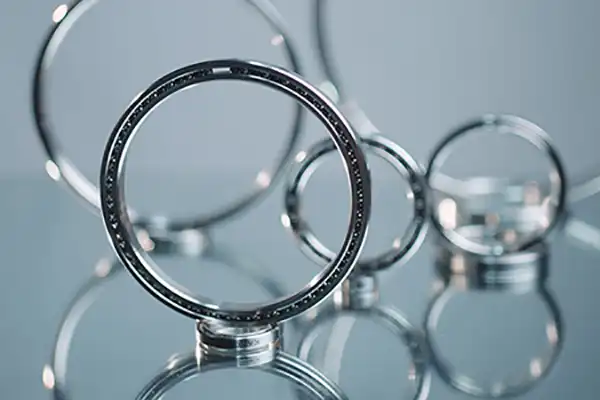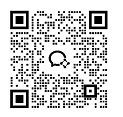How Do You Maintain Thin Section Four Point Contact Ball Bearings?
Thin Section Four Point Contact Ball Bearings represent a pinnacle of precision engineering, designed to meet the most demanding applications across aerospace, robotics, medical equipment, and high-performance industrial machinery. These sophisticated components are characterized by their exceptionally slim profile, unique four-point contact design, and ability to handle both radial and axial loads with remarkable efficiency. Maintaining these precision bearings is not just a routine task but a critical strategy to ensure optimal performance, extended operational life, and prevention of catastrophic equipment failure.

What Are the Critical Maintenance Strategies for Thin Section Four Point Contact Ball Bearings?
Maintaining thin section four-point contact ball bearings requires a comprehensive and systematic approach that goes far beyond standard bearing maintenance protocols. The unique geometric characteristics of these bearings demand specialized attention and a deep understanding of their intricate mechanical properties.
The first critical maintenance strategy involves developing a comprehensive maintenance regime that integrates predictive and preventive approaches. Unlike traditional bearings, thin section four-point contact ball bearings operate with minimal tolerances, meaning that even microscopic deviations can significantly impact performance. Engineers and maintenance professionals must establish a rigorous monitoring system that tracks multiple parameters simultaneously.
Environmental conditions play a crucial role in bearing maintenance. These precision components are exceptionally sensitive to contamination, temperature fluctuations, and mechanical stress. A meticulously controlled environment becomes paramount. This involves implementing strict cleanliness protocols in the bearing's operational and storage spaces. Dust, moisture, and particulate matter can cause irreparable damage to the bearing's precision surfaces.
Advanced diagnostic technologies have revolutionized maintenance strategies for these sophisticated bearings. Vibration analysis, thermographic imaging, and acoustic emission techniques provide real-time insights into the bearing's condition. By establishing baseline performance metrics and continuously monitoring these parameters, maintenance teams can detect potential issues before they escalate into critical failures.
Precision alignment represents another fundamental maintenance strategy. Misalignment, even within fractions of a millimeter, can cause uneven load distribution, accelerated wear, and premature bearing failure. Laser alignment tools and sophisticated measurement techniques ensure that bearings are mounted with extreme precision, maintaining optimal contact geometry and load distribution.
How Can Proper Lubrication Extend the Lifespan of Thin Section Four Point Contact Ball Bearings?
Lubrication strategies for thin section four-point contact ball bearings transcend traditional lubrication approaches. These bearings require a nuanced lubrication protocol that considers their unique structural design and operational demands.
The selection of lubricant represents a critical decision that directly impacts bearing performance and longevity. Synthetic lubricants with advanced molecular structures offer superior performance compared to conventional mineral-based oils. These specialized lubricants provide enhanced thermal stability, reduced friction, superior load-bearing capabilities, and improved contamination resistance.
Lubricant viscosity must be precisely matched to the bearing's operational parameters. Factors such as rotational speed, load characteristics, temperature range, and environmental conditions influence lubricant selection. Computational fluid dynamics (CFD) simulations can help engineers determine the optimal lubricant properties for specific application scenarios.
Contamination control becomes paramount in lubrication strategies. Even microscopic contaminants can cause significant bearing damage. Advanced filtration systems, including nano-filtration technologies, help maintain lubricant purity. Regular lubricant analysis using spectroscopic techniques can detect early signs of contamination, wear particles, and chemical degradation.
Lubrication frequency and volume require meticulous calculation. Over-lubrication can be equally detrimental as under-lubrication. Automated lubrication systems with precise dispensing mechanisms ensure consistent lubricant application. These systems can be integrated with sensor networks that provide real-time feedback on lubricant condition and bearing performance.
What Inspection Techniques Prevent Premature Failure in Thin Section Four Point Contact Ball Bearings?
Preventing premature failure in thin section four-point contact ball bearings demands a multifaceted inspection approach that combines advanced non-destructive testing (NDT) techniques, comprehensive data analysis, and proactive maintenance strategies.
Ultrasonic testing represents a cornerstone of modern bearing inspection techniques. High-frequency sound waves can penetrate bearing materials, revealing internal structural anomalies invisible to traditional visual inspection methods. Phased array ultrasonic testing (PAUT) provides three-dimensional imaging of bearing components, detecting microscopic defects before they propagate.
Eddy current testing offers another sophisticated inspection methodology. By generating electromagnetic fields and analyzing their interactions with bearing materials, inspectors can detect surface and subsurface discontinuities. This technique is particularly effective in identifying early-stage material fatigue, micro-cracks, and structural inconsistencies.
Thermal imaging has emerged as a powerful predictive maintenance tool. Infrared cameras can detect temperature variations that indicate potential bearing issues. Abnormal heat signatures can reveal misalignment, lubrication problems, or emerging mechanical failures long before traditional inspection methods would detect them.
Machine learning and artificial intelligence are transforming bearing inspection processes. Advanced algorithms can analyze vast datasets from multiple sensors, creating predictive models that anticipate potential failures with remarkable accuracy. These intelligent systems integrate data from vibration analysis, thermal imaging, lubricant condition monitoring, and operational parameters to generate comprehensive health assessments.
Luoyang Huigong Bearing Technology Co., Ltd. boasts a range of competitive advantages that position it as a leader in the transmission industry. Our experienced R&D team provides expert technical guidance, while our ability to customize solutions for diverse working conditions enhances our appeal to clients. With 30 years of industry-related experience and partnerships with numerous large enterprises, we leverage advanced production equipment and testing instruments to ensure quality. Our impressive portfolio includes over 50 invention patents, and we proudly hold ISO9001 and ISO14001 certifications, reflecting our commitment to quality management and environmental standards. Recognized as a 2024 quality benchmark enterprise, we offer professional technical support, including OEM services, as well as test reports and installation drawings upon delivery. Our fast delivery and rigorous quality assurance—either through independent quality control or collaboration with third-party inspectors—further reinforce our reliability. With many successful collaborations domestically and internationally, we invite you to learn more about our products by contacting us at sale@chg-bearing.com or calling our hotline at +86-0379-65793878.
References
1. SKF Bearing Maintenance Handbook, 2022 Edition
2. ABEC Precision Bearing Design Guidelines, 2021
3. International Journal of Rotating Machinery, "Advanced Maintenance Strategies for Thin Section Bearings," 2023
4. ASME Technical Paper on Bearing Lubrication Techniques, 2022
5. NASA Technical Memorandum on Aerospace Bearing Maintenance, 2021
6. IEEE Transactions on Reliability, "Predictive Maintenance of Precision Bearings," 2022
7. Journal of Tribology, "Lubricant Performance in Thin Section Bearings," 2023
8. Machinery Lubrication Magazine, Special Issue on Advanced Bearing Technologies, 2022
9. Industrial Maintenance & Plant Operations Journal, 2023
10. Society of Manufacturing Engineers Technical Paper Collection, 2022

